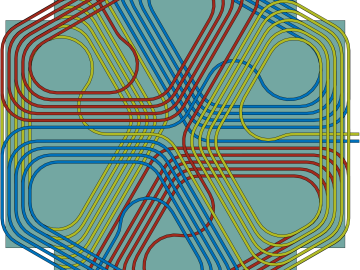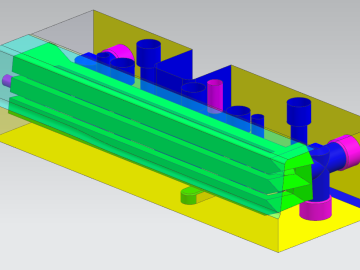
Filter News
Area of Research
- (-) Energy Science (60)
- Advanced Manufacturing (11)
- Biology and Environment (17)
- Building Technologies (1)
- Computational Biology (1)
- Computational Engineering (2)
- Computer Science (5)
- Fusion Energy (1)
- Isotopes (1)
- Materials (22)
- Materials for Computing (5)
- Mathematics (1)
- National Security (3)
- Neutron Science (4)
- Nuclear Science and Technology (1)
- Quantum information Science (3)
- Supercomputing (14)
- Transportation Systems (2)
News Topics
- (-) 3-D Printing/Advanced Manufacturing (23)
- (-) Big Data (1)
- (-) Biomedical (1)
- (-) Clean Water (4)
- (-) Machine Learning (2)
- (-) Nanotechnology (1)
- (-) Transportation (26)
- Artificial Intelligence (1)
- Bioenergy (2)
- Biology (2)
- Biotechnology (1)
- Buildings (13)
- Chemical Sciences (1)
- Composites (9)
- Computer Science (9)
- Coronavirus (2)
- Critical Materials (4)
- Energy Storage (21)
- Environment (15)
- Grid (15)
- High-Performance Computing (1)
- Hydropower (2)
- Materials (12)
- Materials Science (9)
- Mathematics (1)
- Mercury (1)
- Microscopy (2)
- Nuclear Energy (1)
- Polymers (5)
- Simulation (1)
- Space Exploration (2)
- Statistics (1)
Media Contacts

Oak Ridge National Laboratory scientists evaluating northern peatland responses to environmental change recorded extraordinary fine-root growth with increasing temperatures, indicating that this previously hidden belowground mechanism may play an important role in how carbon-rich peatlands respond to warming.

Researchers at Oak Ridge National Laboratory developed a method that uses machine learning to predict seasonal fire risk in Africa, where half of the world’s wildfire-related carbon emissions originate.
An international team of scientists found that rules governing plant growth hold true even at the edges of the world in the Arctic tundra.

Oak Ridge National Laboratory researchers have developed a thin film, highly conductive solid-state electrolyte made of a polymer and ceramic-based composite for lithium metal batteries.

Researchers at Oak Ridge National Laboratory demonstrated a 20-kilowatt bi-directional wireless charging system on a UPS plug-in hybrid electric delivery truck, advancing the technology to a larger class of vehicles and enabling a new energy storage method for fleet owners and their facilities.

ORNL researchers created and tested new wireless charging designs that may double the power density, resulting in a lighter weight system compared with existing technologies.

Researchers demonstrated that an additively manufactured hot stamping die can withstand up to 25,000 usage cycles, proving that this technique is a viable solution for production.

A team including Oak Ridge National Laboratory and University of Tennessee researchers demonstrated a novel 3D printing approach called Z-pinning that can increase the material’s strength and toughness by more than three and a half times compared to conventional additive manufacturing processes.

A new method developed at Oak Ridge National Laboratory improves the energy efficiency of a desalination process known as solar-thermal evaporation.

A team of researchers at Oak Ridge National Laboratory have demonstrated that designed synthetic polymers can serve as a high-performance binding material for next-generation lithium-ion batteries.


